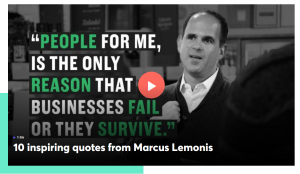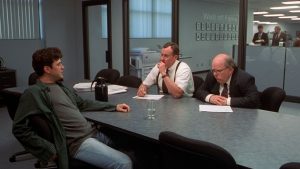I read an article recently that got me thinking about the unintended consequences of downsizing. The article was from Harvard Business Review which reported that “downsizing could lead to a host of problems that eventually increases the likelihood of bankruptcy.” They compiled data from a team of researchers from Auburn University, Baylor University, and the University of Tennessee, Chattanooga and found that downsizing firms were twice as likely to declare bankruptcy as firms that did not downsize. It also revealed two major causes that lead to bankruptcy: 1. “[loss of] valuable knowledge when employees exit; remaining employees struggle to manage increased workloads, leaving little time to learn new skills; 2. and remaining employees lose trust in management, resulting in less engagement and loyalty.”
Businesses are changing and being changed by trends and economic circumstances every day forcing owners and firms to make hard decisions. The decision to downsize is often one of those difficult and necessary ones. I get it. During the recession of 2008 and all through to the middle of 2010 companies around the world downsized their workforces. More than 8 million workers were laid off in American firms alone. And they all did it for the same benefits; reduce costs and improve the profit margin and viability of the organization. Getting lean they call it. It’s a black and white concept that looks okay on paper in the short term, but what about the long-term unintended consequences? Yeah, BANKRUPTCY.
On the books I’m sure downsizing makes perfect sense. However long-term it can deteriorate workforce efficiency, engagement and loyalty. Fortunately there’s a solution, albeit an intangible one. And that’s what is most interesting about this report. They found that it didn’t matter how much financial and physical resources a firm had, it made no difference on the prevention of bankruptcy. In contrast it was the intangible resources that reduced the likelihood of declaring bankruptcy. Intangible resources like tapping into the remaining employees knowledge, and communicating with purpose. The right interaction is what helped diminish lack of trust or loyalty and strengthened the overall culture and future of the company.
Marcus Lemonis, the self-made millionaire and host of “The Profit” has said, “People for me, is the only reason that businesses fail or they survive.”

In the book Culture Code by Daniel Coyle he plainly identifies 3 crucial elements in building a positive work culture and none of them are skills based.

- Build Safety
- Share Vulnerability
- Establish Purpose
Individual Skills is not what matters. It’s interaction. From personal career experience and interactions with others I’m sure you can agree. I recall in one of my prior occupations when a change of leadership caused all sorts of uncertainty with the employees, including me. We wondered what kind of “changes” the new guy would spring on us. We wondered if our budget was going to be cut or if our positions were going to be cut. Just a simple change of guard can leave a massive void of uncertainty that leads to anxiety and walk-outs. Downsizing can leave even more uncertainty. My favorite movie that paints this picture is Office Space. It dramatizes the affect downsizing has on the cubicle dwelling employees at the fictional yet all too familiar company Initech. The main character Peter Gibbons, a disengaged software engineer who is clearly tired of the bleak atmosphere, useless forms, inane boss and faulty office fax equipment could easily be anyone of us, aside from the accidental hypnosis.

All jokes and fictional movies aside, if you’re an organization in the middle of downsizing I would urge you to focus on the remaining workforce you have. Your people. Have a “Status Management” meeting of the minds – the where you fit in the bigger picture talk. I’ve found that if you don’t do this in a downsizing organization you leave the door wide open for employees to feel so inclined to just walk out. And if they don’t walk out their engagement (morale) goes way way down affecting efficiency and innovation. Neither of which are good for a downsizing firm.
Thanks for reading. If you have any comments or questions please leave them below.
Interested in Dream Team Training to tap into the intangible assets; people? Then click the link below and learn more.



